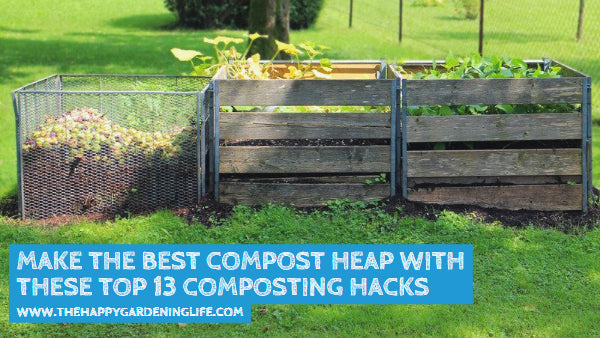
Make the Best Compost Heap With These Top 13 Composting Hacks
Share
 Composting is one of the most essential components of organic gardening. It is the natural process of breaking down organic matter such as leaves, twigs, plant scraps, and other waste materials.
Composting is one of the most essential components of organic gardening. It is the natural process of breaking down organic matter such as leaves, twigs, plant scraps, and other waste materials.
It’s also a green way to recycle your rotten fruits and vegetables. By adding good compost to your garden soil, you can truly enhance the growth and overall health of your plants and bring back nutrients to your garden as well.
This is why organic growers really practice composting rather than buy commercial fertilizers. You may never know what chemical substances are in those so-called fertilizers, but when you create your own compost, you can be sure that it’s all organic.
To guide you in starting your homemade compost, go ahead and use these 6 composting tips below. They will help you achieve a quality compost heap that will do wonders for your garden.
Is this blog post helpful to you? Share this with your fellow gardeners now by clicking the social buttons!
13 Best Composting Hacks for Your Garden
1. The perfect size for a compost pile is one that is at least 3′ x 3′ x 3′. It’s not only a manageable size to turn, but it’s ideal for retaining heat while still allowing air flow.
2. Grass clippings add necessary nitrogen to a compost pile, but be sure to mix with the “brown” materials that add carbon. Both are necessary for quick decomposition and rich compost. Piles made up of just grass will compact, slow down and start to stink.
3. Do not compost fats, pet droppings, or animal products. They will attract pests to the pile and can spread disease.
4. Newspaper or plain white paper from the computer is excellent for composting – just remember to shred it first to speed up the process.
5. Plants that have been treated with pesticides and/or herbicides (weeds and lawn clippings) should be avoided.
6. The microbes responsible for breaking down your compost pile need a balanced diet of nitrogen and carbon. Nitrogen comes from green materials such as food scraps, manure, and grass clippings. Carbon comes from brown materials such as dead leaves, hay, wood chips and shredded newspaper. A ratio that contains equal portions by weight (not volume) of both works best.
7. Algae and seaweed make excellent additions to your compost pile. Be sure to rinse off any salts before using.
8. Does your compost pile smell? It’s probably due to a large number of anaerobic microbes, which are working hard to break down your compost, but creating a smelly situation in the process. To cut down on the anaerobic process, aerate your pile regularly, creating air spaces and limiting the anaerobic microbes while stimulating the less stinky aerobic microbes.
9. Keep your compost pile in a black plastic bin and in direct sunlight to continue the composting process through the winter. Hay bales can be used to further insulate the pile.
10. Compost decomposes fastest between 120 and 160˚F. Decomposition will occur at lower temperatures, but it takes much longer.
11. Got compost? When finished it should look, feel and smell like rich, dark soil. You should not be able to recognize any of the items you put in there.
12. Finished compost is usually less than half the volume of the materials you started with, but it’s much denser.
13. Apply finished compost to your garden about 2-4 weeks before you plant, giving the compost time to integrate and stabilize within the soil.
Article Source: Planet Natural
